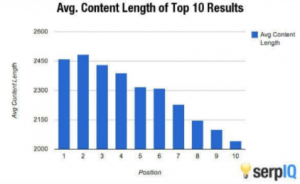Augmented Reality: The Hottest Thing Marketers Don’t Want
by Mike Proulx , Op-Ed Contributor, September 18, 2017
Last week, all of our Snapchat bitmoji became 3D with the launch of some new “World Lenses.” At best they’re entertaining and, admittedly, kind of fun. And while these new lenses are a great step forward for Snapchat’s Bitmoji, we shouldn’t expect marketers to set aside a healthy 2018 budget for AR…just yet. Why?
We recently surveyed over 600 marketers across industries, roles, and levels to find out what agency “digital” marketing capabilities and media trends are most important. We asked them to prioritize (out of a list of over 40) the capabilities they felt are the biggest drivers for their business. Things that popped to the top include digital strategy, content strategy, CRM, and customer experience (CX).
When asked what they plan to spend more money on in 2018, marketers emphasized emerging media and innovation as their top pick. However, at every cut of our data, their lowest priority (whether analyzed via business alignment, spending, c-suite-only execs, or industry) is augmented, virtual, and/or mixed reality.
At first, this was a bit surprising given their planned investments on emerging media. But the thing is, most marketers have yet to see real business-driving applications of any immersive-type media outside of a few exceptions—like visualizing furniture in your home. Let’s face it, most marketers’ introduction to AR has been either Pokémon GO or Snapchat lenses. Meanwhile, VR is still a clunky user-experience for the masses, and mixed-reality has yet to prove itself outside its conceptual stage. So grouping AR, VR and MR together doesn’t make sense because they’re different user experiences and maturing at different speeds.
In fact, because of its growing accessibility and ease of use, AR seems to be much better poised than ever to leapfrog VR in the marketing landscape. Having to buy a separate headset that people aren’t going to carry around (let alone wear in random public settings) isn’t a recipe for mass usage. In contrast, AR is embedded directly into the very hardware that’s practically attached to us at every moment of every day—our smartphones.
Last week’s iPhone X announcement shined an even bigger light on Apple’s ARKit, revealed earlier in 2017 at the Worldwide Developers Conference. With the device’s faster processer, new gyro accelerometer and calibrated camera, the new flagship iPhone is literally optimized for AR.
As the likes of Apple, Facebook, and Google lean heavily into augmented reality and embrace the developer community with open and easy access, you can bet AR will evolve beyond its superficial applications into more practical business solutions.
And with eMarketer forecasting close to 50 million AR users in the US next year, augmented reality is very relevant for brands fighting the daily share battle. So as marketers finalize their budgets for 2018, they should plan to spend more on augmented reality initiatives because it will have a business-driving impact on both their digital and CX strategies—two things that we know are top priorities for them. It just requires designing AR for utility rather than entertainment. Dog ears and dancing hotdogs, anyone?
MediaPost.com: Search Marketing Daily
(60)







